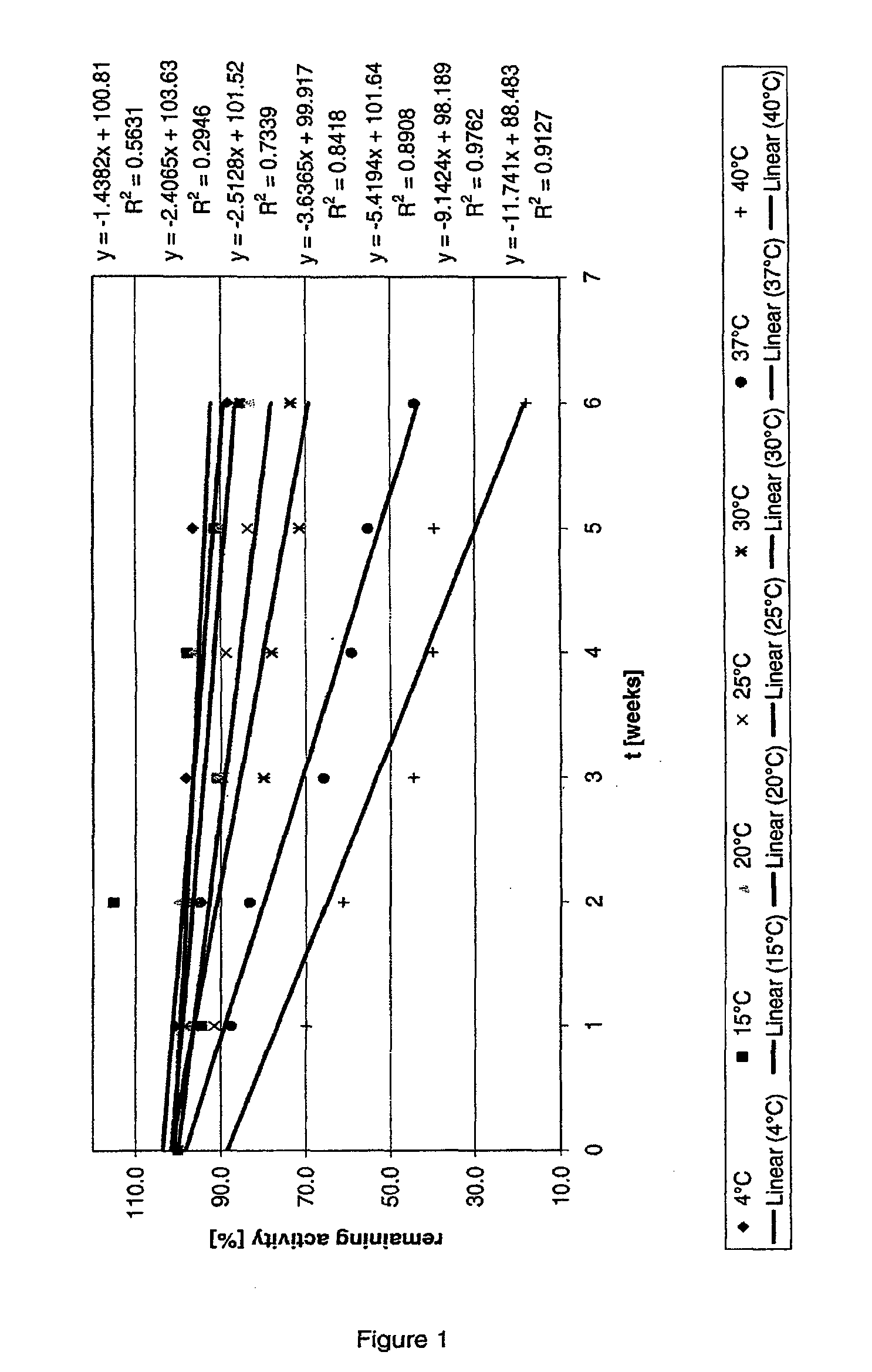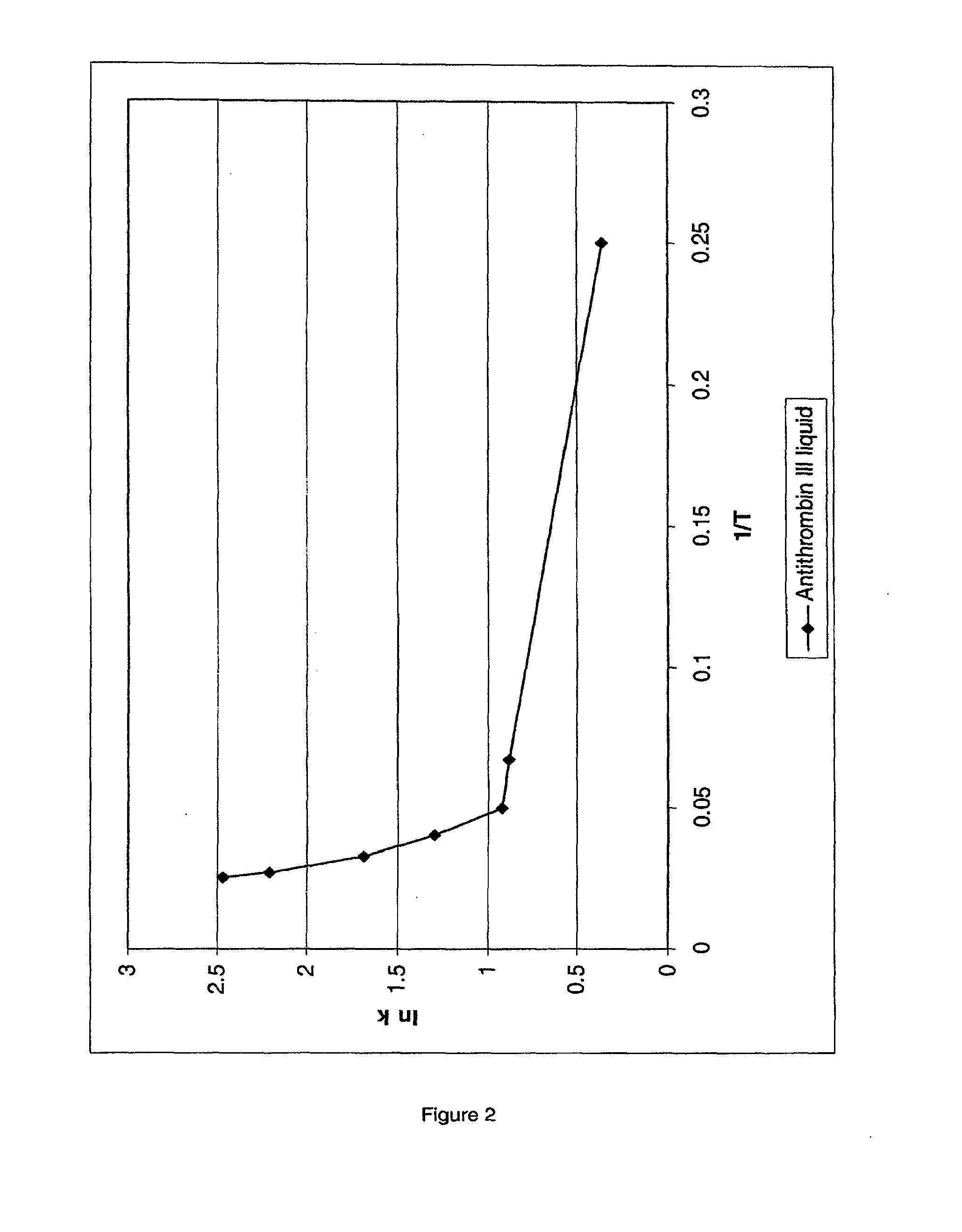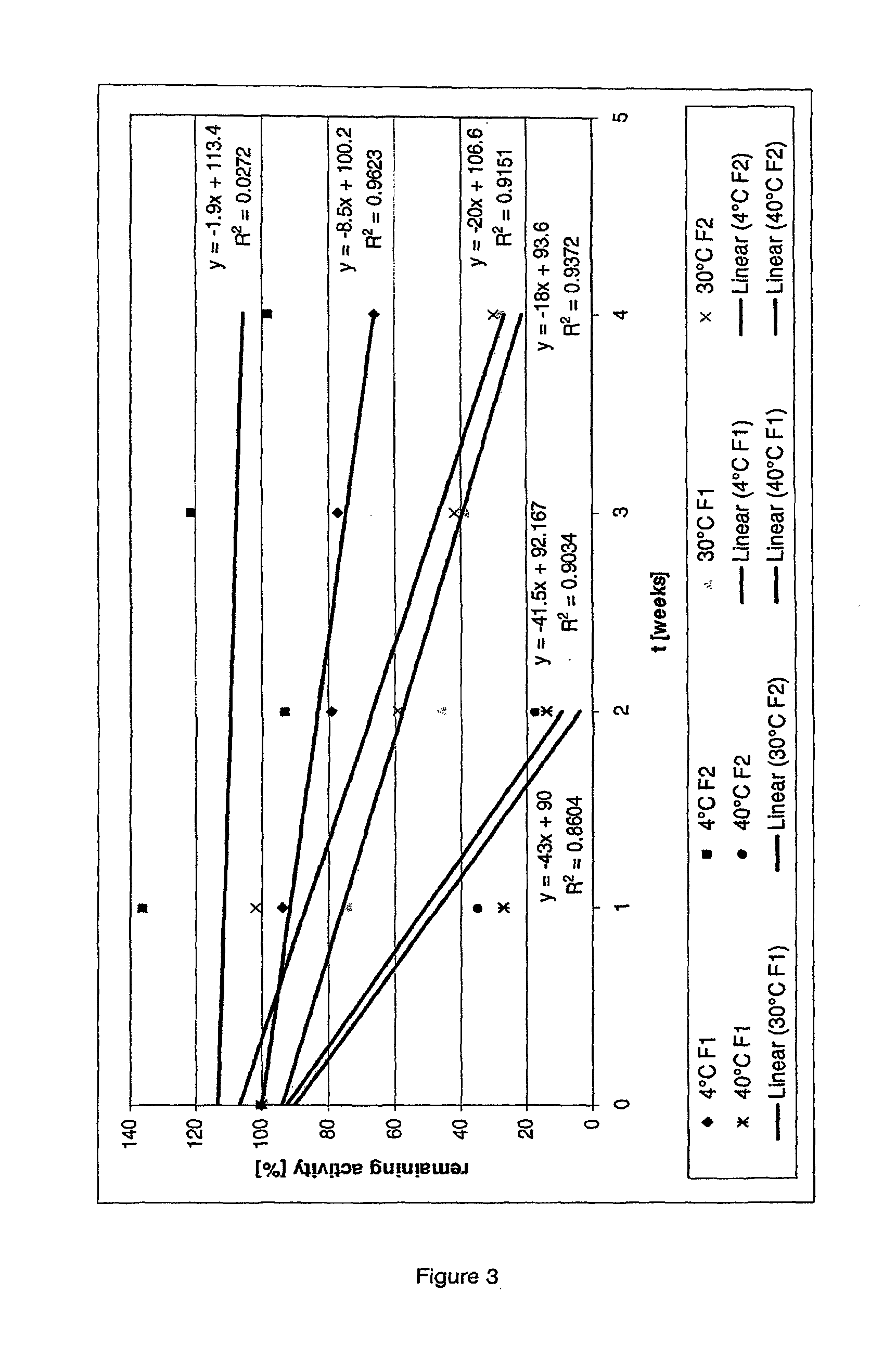Methods for modeling protein stability
a protein stability and protein technology, applied in the field of methods for modeling protein stability, can solve the problem of whether the data from accelerated studies can be extrapolated to those under real-time conditions
- Summary
- Abstract
- Description
- Claims
- Application Information
AI Technical Summary
Benefits of technology
Problems solved by technology
Method used
Image
Examples
embodiments
[0025]Due to time considerations, protein stability assays are routinely performed at higher temperatures than those at which a therapeutic protein formulation will ultimately be stored at prior to administration. It has been found herein that protein stability calculations derived from accelerated protein stability assays performed at high temperatures are unreliable due to the non-linear relationship between temperature and protein stability. As such, a balance must be struck between minimizing the time it takes to determine the stability of a particular protein formulation and obtaining accurate extrapolations for the stability of the formulation at a given temperature.
[0026]Advantageously, the present invention provides, among other aspects, methods that allow for rapid and accurate determination of the stability of a protein formulation at a desired temperature. In certain embodiments, the present invention provides methods for accurately determining the stability of a protein ...
example 1
Real-Time Stability of a Liquid Antithrombin III Formulation
[0138]Stability of a liquid Antithrombin III (AT III) formulation at elevated temperatures was determined to be about 10 days at 40° C. and about 45 days at 25° C. Prediction of real-time stability at 4° C., based on this accelerated protein stability data under the assumption of a linear Arrhenius plot at these elevated temperatures, results in a predicted stability at 4° C. of about 4 to 6 months. However, long-term studies showed a stability of the above AT III formulation at 4° C. of about 14 months. The conclusion drawn from these data is that protein stability determinations derived from protein stability data at elevated temperatures cannot necessarily be extrapolated to lower temperatures, since the assumption of linearity of the Arrhenius plot at elevated temperatures may not be correct.
example 2
Short Term Stability Determination of a Liquid Antithrombin III Formulation
[0139]Short term stability of the above liquid AT III formulation was determined over the course of 6 weeks at temperatures of 4° C., 15° C., 20° C., 25° C., 30° C., 37° C. and 40° C. Activity data at the different temperatures over time is shown in Tables 1 to 7.
TABLE 1AT III activity at 4° C. over timet [weeks]absolute activityremaining activity [%]052.77100.0153.07100.6249.8994.5351.7698.1451.4397.5550.9296.5646.6188.3
TABLE 2AT III activity at 15° C. over timet [weeks]absolute activityremaining activity [%]052.77100.0149.8394.4260.8115.1347.990.7451.697.8548.391.5645.085.3
TABLE 3AT III activity at 20° C. over timet [weeks]absolute activityremaining activity [%]052.77100.0151.7198.0252.8100.1347.790.4450.896.2547.590.1643.983.1
TABLE 4AT III activity at 25° C. over timet [weeks]absolute activityremaining activity [%]052.77100.0148.2891.5250.695.9347.389.6446.888.8544.283.8638.873.6
TABLE 5AT III activity at 3...
PUM
| Property | Measurement | Unit |
|---|---|---|
| Temperature | aaaaa | aaaaa |
| Temperature | aaaaa | aaaaa |
| Temperature | aaaaa | aaaaa |
Abstract
Description
Claims
Application Information
 Login to View More
Login to View More - R&D
- Intellectual Property
- Life Sciences
- Materials
- Tech Scout
- Unparalleled Data Quality
- Higher Quality Content
- 60% Fewer Hallucinations
Browse by: Latest US Patents, China's latest patents, Technical Efficacy Thesaurus, Application Domain, Technology Topic, Popular Technical Reports.
© 2025 PatSnap. All rights reserved.Legal|Privacy policy|Modern Slavery Act Transparency Statement|Sitemap|About US| Contact US: help@patsnap.com



